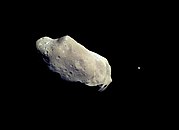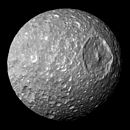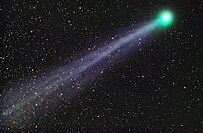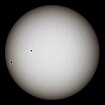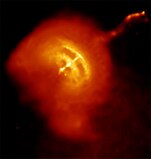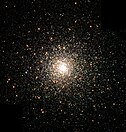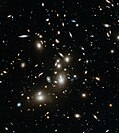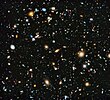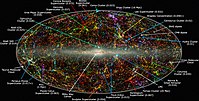Astronomical object
Anastronomical object,celestial object,stellar objectorheavenly bodyis a naturally occurringphysical entity,association, or structure that exists within theobservable universe.[1]Inastronomy,the termsobjectandbodyare often used interchangeably. However, anastronomical bodyorcelestial bodyis a single, tightly bound, contiguous entity, while an astronomical or celestialobjectis a complex, less cohesively bound structure, which may consist of multiple bodies or even other objects with substructures.
Examples of astronomical objects includeplanetary systems,star clusters,nebulae,andgalaxies,whileasteroids,moons,planets,andstarsare astronomical bodies. Acometmay be identified as both a body and an object: It is abodywhen referring to the frozennucleusof ice and dust, and anobjectwhen describing the entire comet with its diffusecomaandtail.
History
[edit]Astronomical objects such asstars,planets,nebulae,asteroidsandcometshave been observed for thousands of years, although earlyculturesthought of these bodies asgodsor deities. These early cultures found the movements of the bodies very important as they used these objects to help navigate over long distances, tell between the seasons, and to determine when to plant crops. During theMiddle-Ages,cultures began to study the movements of these bodies more closely. Several astronomers of theMiddle-Eastbegan to make detailed descriptions of stars and nebulae, and would make more accurate calendars based on the movements of these stars and planets. InEurope,astronomers focused more on devices to help study the celestial objects and creating textbooks, guides, anduniversitiesto teach people more about astronomy.
During theScientific Revolution,in 1543,Nicolaus Copernicus'sheliocentric modelwas published. This model described theEarth,along with all of the other planets as being astronomical bodies which orbited theSunlocated in the center of theSolar System.Johannes KeplerdiscoveredKepler's laws of planetary motion,which are properties of the orbits that the astronomical bodies shared; this was used to improve the heliocentric model. In 1584,Giordano Brunoproposed that all distant stars are their own suns, being the first in centuries to suggest this idea.Galileo Galileiwas one of the first astronomers to use telescopes to observe the sky, in 1610 he observed the four largest moons ofJupiter,now named theGalilean moons.Galileo also made observations of the phases ofVenus,craters on theMoon,andsunspotson the Sun. AstronomerEdmond Halleywas able to successfully predict the return ofHalley's Comet,which now bears his name, in 1758. In 1781,Sir William Herscheldiscovered the new planetUranus,being the first discovered planet not visible by the naked eye.
In the 19th and 20th century, new technologies and scientific innovations allowed scientists to greatly expand their understanding of astronomy and astronomical objects. Larger telescopes and observatories began to be built and scientists began to print images of the Moon and other celestial bodies on photographic plates. Newwavelengthsof light unseen by the human eye were discovered, and new telescopes were made that made it possible to see astronomical objects in other wavelengths of light.Joseph von FraunhoferandAngelo Secchipioneered the field ofspectroscopy,which allowed them to observe the composition of stars and nebulae, and many astronomers were able to determine the masses of binary stars based on theirorbital elements.Computers began to be used to observe and study massive amounts of astronomical data on stars, and new technologies such as thephotoelectricphotometerallowed astronomers to accurately measure the color and luminosity of stars, which allowed them to predict their temperature and mass. In 1913, theHertzsprung-Russell diagramwas developed by astronomersEjnar HertzsprungandHenry Norris Russellindependently of each other, which plotted stars based on their luminosity and color and allowed astronomers to easily examine stars. It was found that stars commonly fell on a band of stars called themain-sequencestars on the diagram. A refined scheme forstellar classificationwas published in 1943 byWilliam Wilson MorganandPhilip Childs Keenanbased on the Hertzsprung-Russel Diagram. Astronomers also began debating whether other galaxies existed beyond theMilky Way,these debates ended whenEdwin Hubbleidentified theAndromeda nebulaas a different galaxy, along with many others far from the Milky Way.
Galaxy and larger
[edit]Theuniversecan be viewed as having a hierarchical structure.[2]At the largest scales, the fundamental component of assembly is thegalaxy.Galaxies are organized intogroups and clusters,often within largersuperclusters,that are strung along greatfilamentsbetween nearly emptyvoids,forming a web that spans the observable universe.[3]
Galaxies have a variety ofmorphologies,withirregular,ellipticalanddisk-likeshapes, depending on their formation and evolutionary histories, includinginteractionwith other galaxies, which may lead to amerger.[4]Disc galaxies encompasslenticularandspiral galaxieswith features, such asspiral armsand a distincthalo.At the core, most galaxies have asupermassive black hole,which may result in anactive galactic nucleus.Galaxies can also have satellites in the form ofdwarf galaxiesandglobular clusters.[5]
Within a galaxy
[edit]The constituents of a galaxy are formed out of gaseous matter that assembles through gravitational self-attraction in a hierarchical manner. At this level, the resulting fundamental components are the stars, which are typically assembled in clusters from the various condensing nebulae.[6]The great variety of stellar forms are determined almost entirely by the mass, composition and evolutionary state of these stars. Stars may be found in multi-star systems that orbit about each other in a hierarchical organization. A planetary system and various minor objects such as asteroids, comets and debris, can form in a hierarchical process of accretion from theprotoplanetary disksthat surround newly formed stars.
The various distinctive types of stars are shown by theHertzsprung–Russell diagram(H–R diagram)—a plot of absolute stellar luminosity versus surface temperature. Each star follows anevolutionary trackacross this diagram. If this track takes the star through a region containing anintrinsic variabletype, then its physical properties can cause it to become avariable star.An example of this is theinstability strip,a region of the H-R diagram that includesDelta Scuti,RR LyraeandCepheid variables.[7]The evolving star may eject some portion of its atmosphere to form a nebula, either steadily to form aplanetary nebulaor in asupernovaexplosion that leaves aremnant.Depending on the initial mass of the star and the presence or absence of a companion, a star may spend the last part of its life as acompact object;either awhite dwarf,neutron star,orblack hole.
Shape
[edit]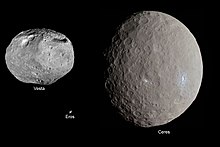
TheIAU definitions of planetanddwarf planetrequire that a Sun-orbiting astronomical body has undergone the rounding process to reach a roughly spherical shape, an achievement known ashydrostatic equilibrium.The samespheroidalshape can be seen on smaller rocky planets likeMarstogas giantslikeJupiter.
Any natural Sun-orbiting body that has not reached hydrostatic equilibrium is classified by the IAU as asmall Solar System body(SSSB). These come in many non-spherical shapes which are lumpy masses accreted haphazardly by in-falling dust and rock; not enough mass falls in to generate the heat needed to complete the rounding. Some SSSBs are just collections of relatively small rocks that are weakly held next to each other by gravity but are not actually fused into a single bigbedrock.Some larger SSSBs are nearly round but have not reached hydrostatic equilibrium. The small Solar System body4 Vestais large enough to have undergone at least partial planetary differentiation.
Stars like the Sun are also spheroidal due to gravity's effects on theirplasma,which is a free-flowingfluid.Ongoingstellar fusionis a much greater source of heat for stars compared to the initial heat released during their formation.
Categories by location
[edit]The table below lists the general categories of bodies and objects by their location or structure.
See also
[edit]- List of light sources
- List of Solar System objects
- List of Solar System objects by size
- Lists of astronomical objects
- Outer space
References
[edit]- ^Task Group on Astronomical Designations from IAU Commission 5 (April 2008)."Naming Astronomical Objects".International Astronomical Union (IAU).Archivedfrom the original on 2 August 2010.Retrieved4 July2010.
{{cite web}}:CS1 maint: numeric names: authors list (link) - ^Narlikar, Jayant V. (1996).Elements of Cosmology.Universities Press.ISBN81-7371-043-0.
- ^Smolin, Lee (1998).The life of the cosmos.Oxford University Press US.p.35.ISBN0-19-512664-5.
- ^Buta, Ronald James; Corwin, Harold G.; Odewahn, Stephen C. (2007).The de Vaucouleurs atlas of galaxies.Cambridge University Press.p. 301.ISBN978-0-521-82048-6.
- ^Hartung, Ernst Johannes (1984-10-18).Astronomical Objects for Southern Telescopes.CUP Archive.ISBN0521318874.Retrieved13 February2017.
- ^Elmegreen, Bruce G. (January 2010). "The nature and nurture of star clusters".Star clusters: basic galactic building blocks throughout time and space, Proceedings of the International Astronomical Union, IAU Symposium.Vol. 266. pp. 3–13.arXiv:0910.4638.Bibcode:2010IAUS..266....3E.doi:10.1017/S1743921309990809.
- ^Hansen, Carl J.; Kawaler, Steven D.; Trimble, Virginia (2004).Stellar interiors: physical principles, structure, and evolution.Astronomy and astrophysics library (2nd ed.). Springer. p.86.ISBN0-387-20089-4.
External links
[edit]- SkyChart,Sky & Telescopeat theLibrary of CongressWeb Archives (archived 2005-06-13)
- Monthly skymaps for every location on Earth.Archived2007-09-13 at theWayback Machine.

